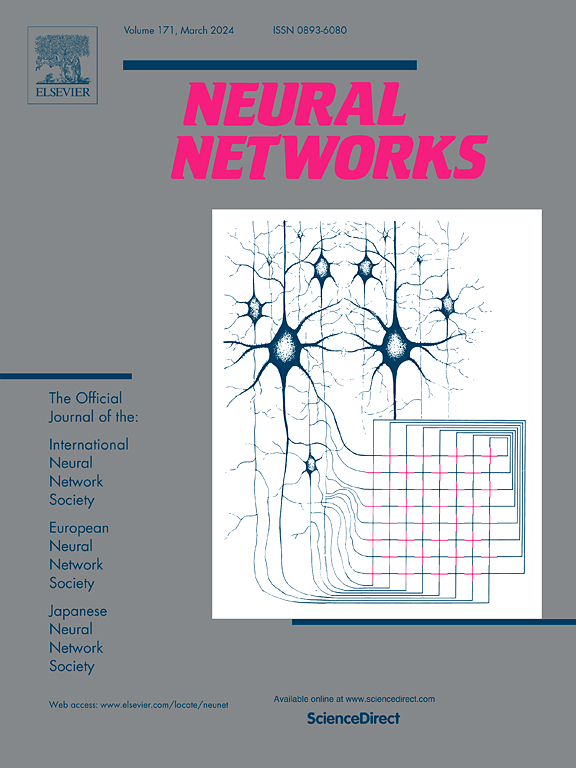Operating performance assessment of industrial process based on MIC-graph convolutional networks with local slow feature analysis
IF 6
1区 计算机科学
Q1 COMPUTER SCIENCE, ARTIFICIAL INTELLIGENCE
引用次数: 0
Abstract
To ensure the safe and stable operation of industrial processes, deep neural network-based operational performance assessment methods have been extensively adopted according to the latest research findings. However, existing industrial process performance assessment models often fail to account for the local spatial structure features and the slowly varying features from time series samples. Such limitations result in the suboptimal exploitation of spatial interaction information and hinder the models’ responsiveness to complex system state transitions, thereby impeding the precise assessment of industrial process performance. To this end, a maximum information coefficient-based graph convolutional networks (MIC-GCN) is proposed for operational performance assessment, which aims to effectively capture the intricate interactions of latent spatial structures embedded in temporal process data. First, a MIC-based graph construction method is employed to transform time series data into graph-structured data with nodes and edges, thereby preserving the local geometric structure of the original data and revealing high-dimensional spatial interaction information among data samples. Second, local slow feature analysis (SFA) is utilized to extract fine-grained dynamic correlation information from the spatial structure of the data. Furthermore, the Siamese GCNs are designed to simultaneously process graph-structured data samples at two consecutive time steps, which facilitates the capture of slowly varying feature representations embedded in the evolving topological structures. The proposed method can precisely extract and deeply mine spatiotemporal interactive features information, thereby enhancing the accuracy of performance assessment. Experimental validation on coal slurry flotation and dense medium coal preparation platforms confirms the method’s efficacy and reliability.
基于局部慢速特征分析的mic -图卷积网络的工业过程运行性能评价
为了保证工业过程的安全稳定运行,根据最新的研究成果,基于深度神经网络的运行性能评估方法被广泛采用。然而,现有的工业过程绩效评价模型往往不能考虑局部空间结构特征和时间序列样本的缓慢变化特征。这些限制导致空间交互信息的开发不够理想,阻碍了模型对复杂系统状态转换的响应,从而阻碍了对工业过程性能的精确评估。为此,提出了一种基于最大信息系数的图卷积网络(MIC-GCN)用于作战性能评估,该网络旨在有效捕获嵌入在时间过程数据中的潜在空间结构的复杂相互作用。首先,采用基于mic的图构建方法,将时间序列数据转化为具有节点和边的图结构数据,既保留了原始数据的局部几何结构,又揭示了数据样本间的高维空间交互信息。其次,利用局部慢特征分析(local slow feature analysis, SFA)从数据的空间结构中提取细粒度的动态关联信息。此外,Siamese GCNs被设计成以两个连续的时间步同时处理图结构的数据样本,这有助于捕获嵌入在不断发展的拓扑结构中缓慢变化的特征表示。该方法可以精确提取和深度挖掘时空交互特征信息,从而提高性能评估的准确性。在煤浆浮选和重介质选煤平台上进行的试验验证,证实了该方法的有效性和可靠性。
本文章由计算机程序翻译,如有差异,请以英文原文为准。
求助全文
约1分钟内获得全文
求助全文
来源期刊

Neural Networks
工程技术-计算机:人工智能
CiteScore
13.90
自引率
7.70%
发文量
425
审稿时长
67 days
期刊介绍:
Neural Networks is a platform that aims to foster an international community of scholars and practitioners interested in neural networks, deep learning, and other approaches to artificial intelligence and machine learning. Our journal invites submissions covering various aspects of neural networks research, from computational neuroscience and cognitive modeling to mathematical analyses and engineering applications. By providing a forum for interdisciplinary discussions between biology and technology, we aim to encourage the development of biologically-inspired artificial intelligence.
 求助内容:
求助内容: 应助结果提醒方式:
应助结果提醒方式:


